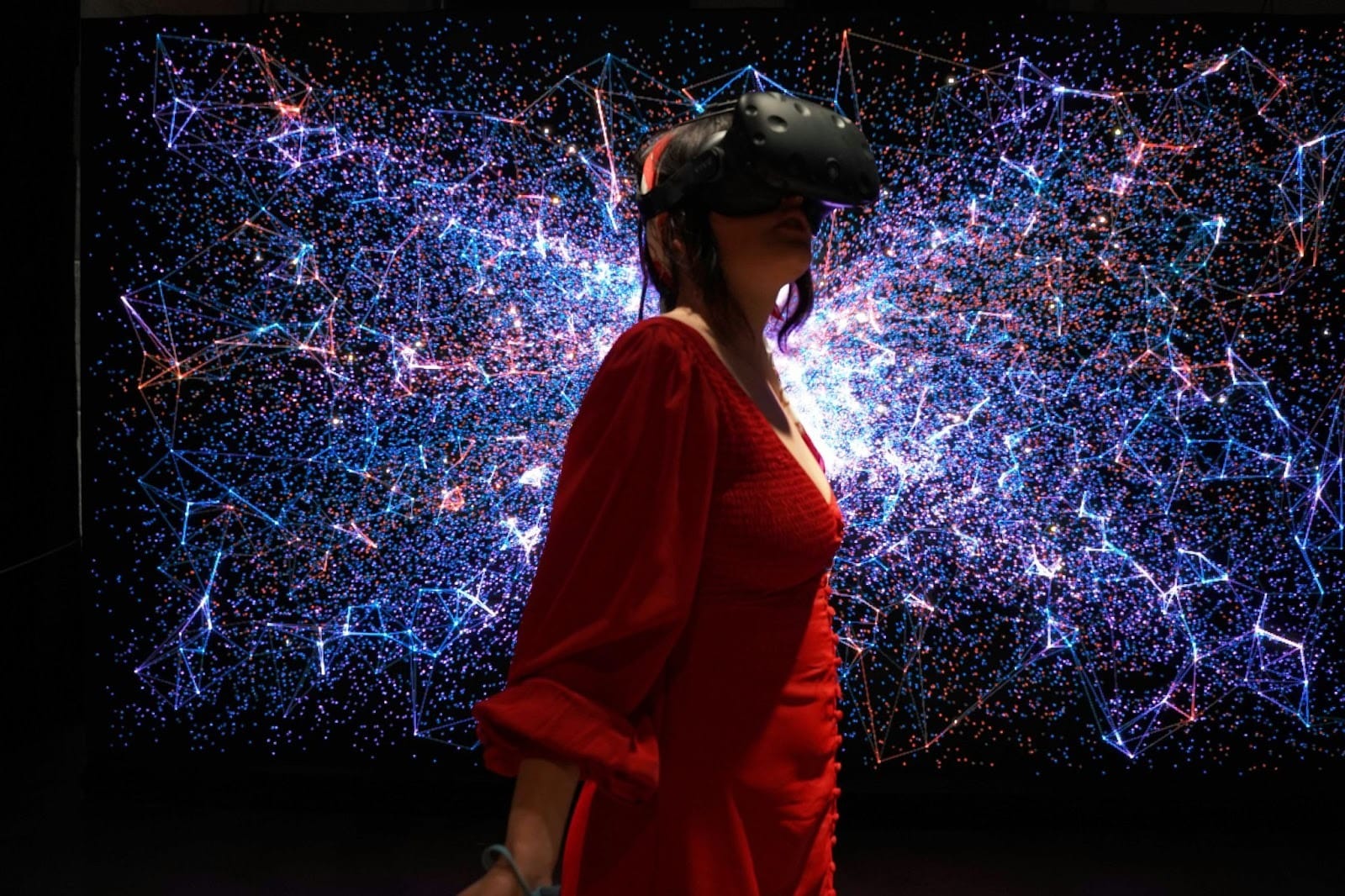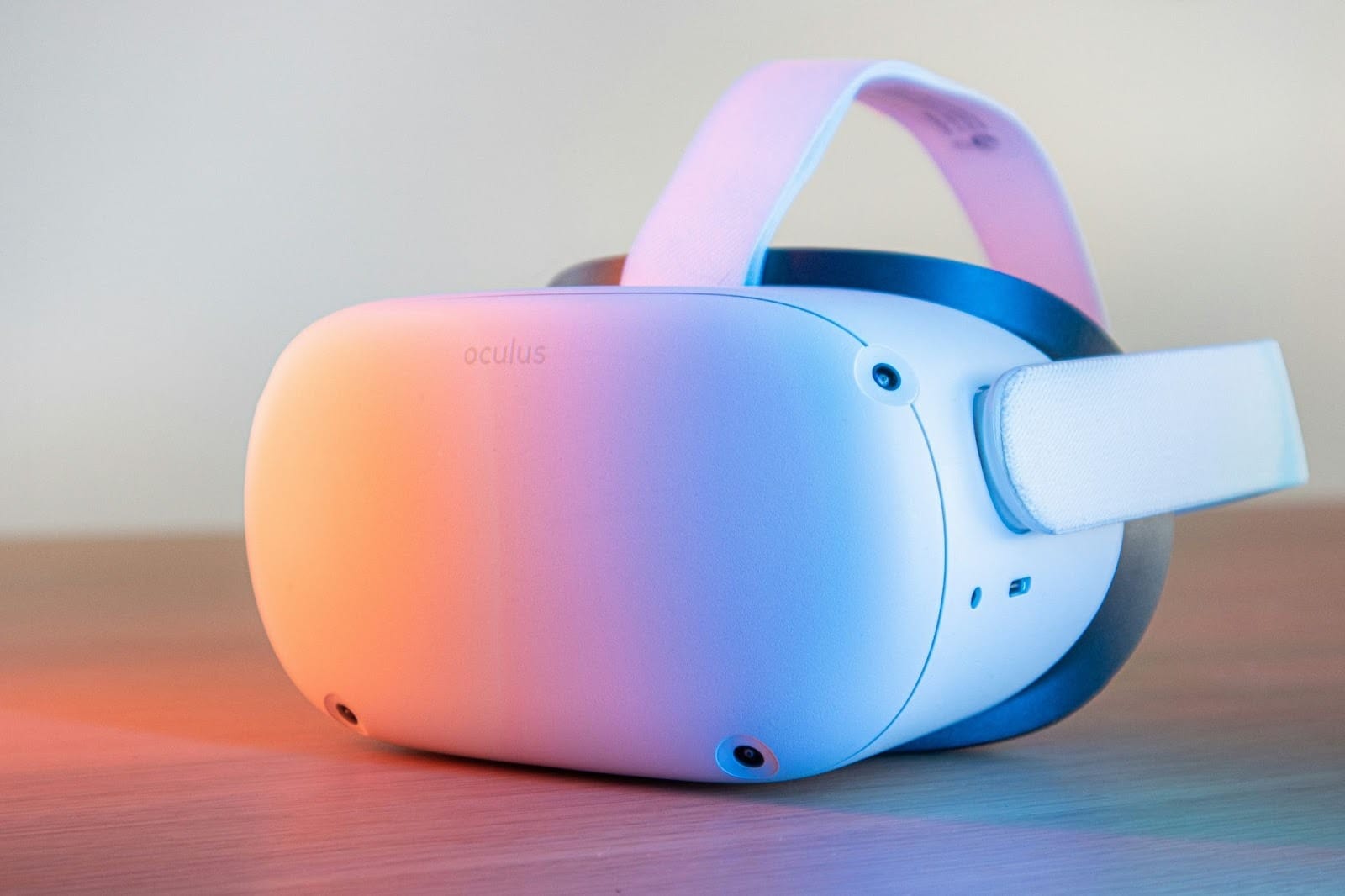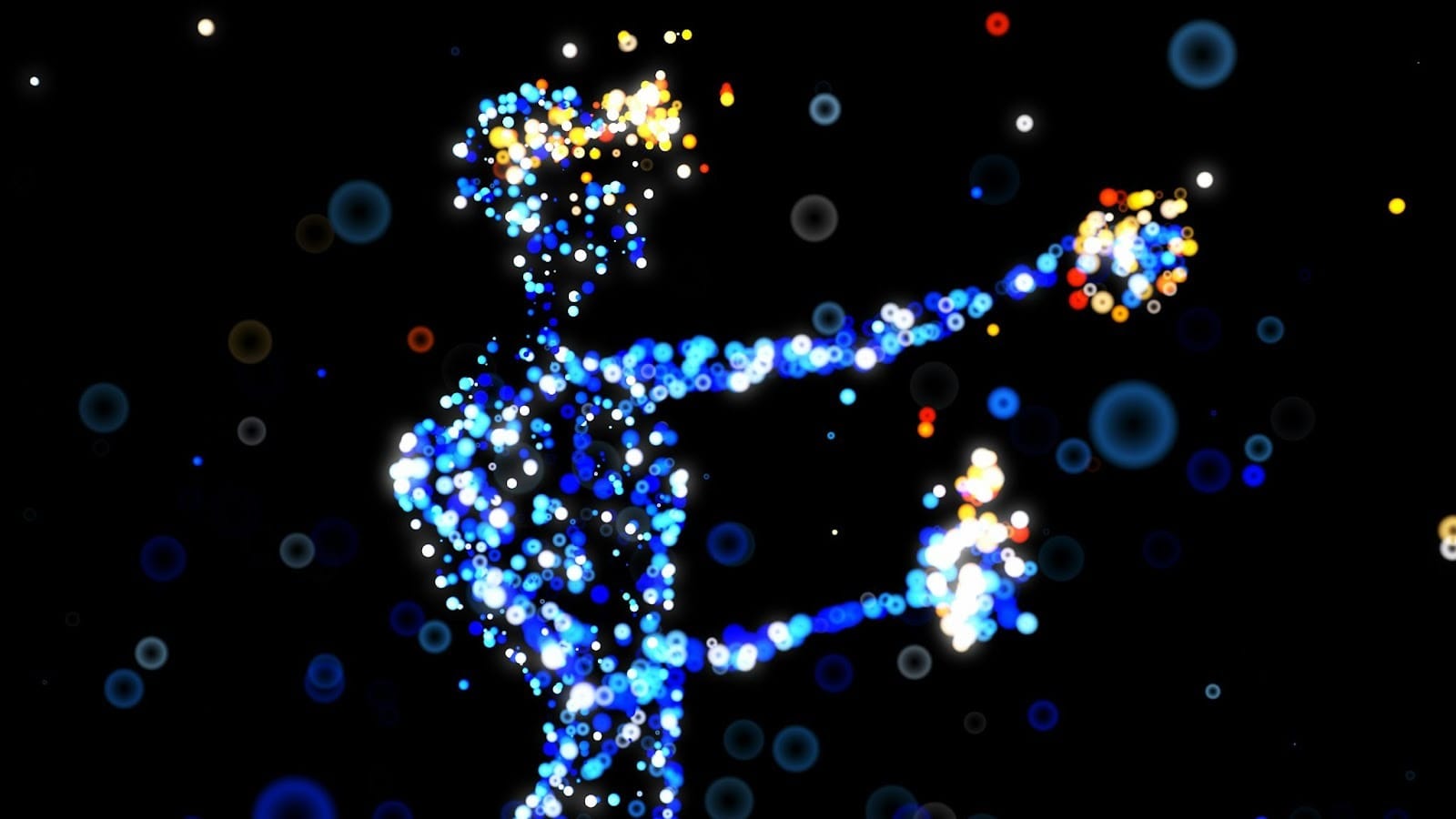What is Extended Reality (XR)? A Complete Guide for Brands and Marketers
From virtual try-ons in IKEA's AR-powered home app to live concerts inside the metaverse featuring artists like Travis Scott or Ariana Grande, digital experiences are now merging seamlessly with the real world.
In 2025, these immersive interactions are no longer futuristic concepts; they are part of a growing Extended Reality (XR) revolution. XR refers to immersive technologies such as Virtual Reality (VR), Augmented Reality (AR), and Mixed Reality (MR) that transform how people interact with media, blurring the boundaries between the physical and digital worlds.
What is Extended Reality (XR)?

Extended Reality (XR) is a blanket term for immersive technologies that are redefining the way we experience and interact with the world. XR blends digital content with our physical surroundings or transports us into fully virtual spaces, a process often referred to as spatial computing.
XR refers to technologies that create immersive experiences, such as Virtual Reality (VR), Augmented Reality (AR), and Mixed Reality (MR). While these immersive technologies share common ground, each serves a unique purpose: VR creates entirely digital worlds, AR overlays information onto the real one, and MR allows the two to coexist and interact in real time.
The History and Evolution of Extended Reality Technology
Extended Reality (XR) traces its origins to mid-20th-century experiments in immersive technology. Early innovators like Morton Heilig, with his Sensorama in the 1960s, and Ivan Sutherland, who built the pioneering Sword of Damocles head-mounted display, introduced the world to the idea of simulated environments that could engage multiple senses. These prototypes marked the first steps toward merging the physical and digital worlds.
Early Concepts & Foundations (1950s–1970s)
Stereoscopes (1800s): The earliest form of 3D visualization, offering depth perception through dual images.
Sensorama (1960s): Morton Heilig's multisensory machine combined visuals, sound, motion, and even scent, foreshadowing immersive experiences.
Sword of Damocles (1968): Ivan Sutherland's head-mounted display introduced interactive computer-generated graphics, laying the groundwork for modern VR and AR.
Growth and Experimentation (1980s–2000s)
The Term Virtual Reality: Coined by Jaron Lanier in the 1980s, defining a new technological frontier.
Early VR Devices: Tools like the VPL DataGlove and prototype headsets pushed interactivity but were limited by computing power.
First AR Applications: In 1988, General Motors introduced a heads-up display in the Oldsmobile Cutlass, marking one of AR's earliest real-world uses.
The Modern XR Era (2010s–Present)
The 2010s sparked a renaissance in immersive technology.
VR Applications: Oculus Rift reignited public interest in Virtual Reality by making high-quality headsets accessible to consumers.
AR Applications: Pokémon GO brought Augmented Reality to the masses, proving its everyday potential.
MR Applications: Microsoft's HoloLens showcased the possibilities of Mixed Reality, enabling digital and physical elements to coexist in shared spaces.
The development of ARKit and ARCore by Apple and Google further democratized AR creation for mobile platforms, while WebXR made immersive content accessible through web browsers through scanning. These innovations shifted XR from niche experimentation to widespread adoption across industries.
The Next Frontier
Today, XR continues to evolve rapidly, powered by artificial intelligence (AI), 5G connectivity, and advances in spatial computing. These technologies are creating more natural, responsive, and connected experiences across fields such as healthcare, education, retail, marketing, and entertainment.
How Extended Reality Works: Decoding the XR Technology Basics

Extended Reality (XR) relies on a combination of hardware, software, and computing systems to merge digital and physical worlds. The core components include
Devices: Headsets, AR glasses, smartphones, and tablets that deliver immersive visuals and interactive content.
Sensors and Cameras: Capture movement, environment, and user inputs to align digital content with the real world.
Rendering Engines: Software that generates real-time graphics and interactive experiences, ensuring smooth and realistic visuals.
A significant development in XR is WebXR. The software allows users to access immersive experiences directly through browsers, eliminating the need for apps. This app-less approach simplifies distribution, making XR campaigns more accessible for consumers and easier to deploy for brands.
XR is democratic, accessible, and easier to use than ever before. This is primarily thanks to a range of platforms and tools, from AR/VR development kits like ARKit and ARCore to cloud-based XR platforms, that enable businesses to create scalable, interactive campaigns. These solutions allow brands to launch immersive experiences across devices, track engagement, and deliver personalized, memorable interactions at scale.
Types of Extended Reality

Alt text: XR Technology
Extended Reality (XR): is the blanket term that encompasses AR, VR, and MR; it refers to all immersive technologies that expand how we experience and interact with the world.
Augmented Reality (AR): AR enhances the physical world by adding digital overlays to it. AR creates unique, engaging campaigns for print media, product packaging, and out-of-home (OOH) advertising.
Virtual Reality (VR): VR can help create fully immersive environments. It replaces the physical environment with a computer-generated setting. Through this tech, users can easily explore branded worlds, interactive storytelling, and virtual experiences.
Mixed Reality (MR): MR combines elements of both VR and AR to blend digital and real-world environments in real time. MR allows users to interact with digital content while remaining aware of their physical surroundings.
Feature | Virtual Reality (VR) | Augmented Reality (AR) | Mixed Reality (MR) |
Environment | Fully immersive digital space | Enhances real-world environment | Combines digital content with the real world in real time |
Device | VR headsets, motion controllers | Smartphones, AR glasses, tablets | MR headsets (e.g., HoloLens), spatial sensors |
User Interaction | Complete isolation from the real world | Interaction within real-world surroundings | Interacts with digital objects anchored in physical space |
Application | Gaming, training, simulations | Retail, marketing, education, navigation | Industrial training, design visualization, collaborative work |
Cost | High (requires dedicated hardware) | Low (runs on existing devices) | Moderate to high (specialized MR devices required) |
Accessibility | Limited to VR-ready spaces | Easily accessible via smartphones | Limited by MR headset availability and setup |
Examples | VR training simulations are used by Walmart and Boeing to train employees. | The most well-known example of AR is the Pokémon GO game. | Microsoft's HoloLens allows you to place and move digital objects in the room. |
Extended Reality Applications Across Industries
From shopping to sports, publishing to healthcare, Extended Reality is reshaping industries, creating immersive experiences that captivate and engage like never before.
Retail & FMCG: Extended Reality enables virtual try-ons, interactive packaging, and in-store AR experiences that help brands engage customers and drive conversions. For example, L'Oréal's AR-powered virtual makeup app lets shoppers see products on their own faces before purchasing.
Luxury & Fashion: AR lookbooks, virtual showrooms, and digital fashion experiences allow consumers to explore products in immersive ways. Burberry's AR-enabled app and Tommy Hilfiger's virtual runway shows let users experience collections digitally, bridging online and physical shopping.
Media & Publishing: Mixed Reality magazines, newspapers, and ads bring static content to life and offer interactive storytelling. For instance, The New York Times AR features overlay interactive visualizations on printed pages or digital devices, enriching the reading experience.
Advertising & Out-of-Home (OOH): AR-enhanced billboards, posters, and packaging scans create engaging and shareable campaigns. Pepsi Max's augmented bus shelter campaign is a classic example, turning ordinary ads into immersive, attention-grabbing experiences.
Events & Sports: XR enables live fan engagement, immersive activations, and virtual access to concerts, matches, and other experiences. Travis Scott's Fortnite concert and Formula 1 virtual fan zones demonstrate how XR can extend real-world events into digital spaces.
Healthcare, Real Estate, and Manufacturing: XR powers training simulations, digital twins, remote maintenance, and interactive design workflows, improving efficiency and learning outcomes. For example, Siemens uses MR for factory training, while Medtronic employs VR for surgical simulations in healthcare, and real estate platforms like Matterport create virtual property tours.
Challenges of Extended Reality
High Hardware Costs: Many VR and MR headsets are costly for the average user. This makes it difficult for businesses and consumers to adopt XR widely.
Device Compatibility: XR experiences may not function seamlessly across all devices and platforms.
Cybersickness: Users may experience headaches, nausea, and dizziness, sometimes referred to as cybersickness, due to extended use of XR technology.
Technical Complexity: Developing and deploying high-quality XR content requires specialized technical skills and expertise that may not be readily available.
Limited Accessibility: Not all users have access to XR-ready spaces or compatible devices, which can restrict engagement.
Privacy and Security Concerns: XR experiences often capture real-world environments and personal data; this raises potential safety and privacy issues.
Performance and Scalability: Ensuring smooth, realistic interactions for multiple users across different platforms can be challenging.
Social Isolation: Humans are social beings, and excessive time spent in virtual environments can result in social isolation.
The Future of Extended Reality
The future of Extended Reality is rapidly unfolding, driven by advances in AI, 5G, spatial computing, and cloud technology. XR is expected to become more accessible, with lightweight devices, app-less experiences, and broader integration across industries.
We can anticipate smarter, more immersive interactions in retail, education, healthcare, entertainment, and enterprise applications. As hardware improves and content creation becomes easier, XR is set to transform not just how we consume media, but how we work, train, learn, shop, play, and connect with the world around us.
How is Extended Reality Changing the World of Media and Advertising?
Extended Reality is transforming media and advertising by shifting experiences from static formats to interactive, immersive storytelling that captures user attention in novel ways.
By blending digital content with physical environments, XR allows consumers to engage with brands both online and in the real world. This seamless integration fosters deeper connections, helping brands build loyalty while creating memorable, engaging experiences that drive consumer interaction and influence purchasing behavior.
A great example of how XR is changing the world of media, advertising, and marketing can be studied through Burger King's "Burn That Ad" campaign in Brazil.
Burger King launched an innovative augmented reality (AR) campaign where users could "burn" a competitor's ad by pointing their smartphones at it, triggering a virtual fire animation.
Once the ad was "burned," a new Burger King ad appeared, offering a free Whopper coupon redeemable at nearby locations. This interactive experience not only engaged users but also incentivized them to participate actively.
The campaign resulted in over 1 million app downloads within a month and increased Burger King Brazil's in-app sales by 55% during the campaign; the smart use of immersive technology perfectly demonstrates the effectiveness of AR in driving consumer engagement and sales.
Flam: Extended Reality Solutions for Brands and Advertisers
Flam offers an AI-powered mixed reality publishing platform that enables brands to transform traditional media into immersive experiences.
With Flam, print, out-of-home (OOH), TV, and product packaging can be turned into app-less XR experiences, allowing consumers to engage with content seamlessly.
The platform provides real-time analytics and campaign performance tracking, giving brands actionable insights to optimize engagement and measure campaign impact.
Flam's commitment to democratizing XR technology sets it apart. Its user-friendly platform allows brands to create immersive campaigns without requiring technical expertise, making advanced XR experiences accessible to businesses and users across industries.
Flam has collaborated with leading brands such as Tanishq, KFC, Samsung, Britannia, Flipkart and Dove, demonstrating the platform's versatility and effectiveness.
Conclusion
Extended Reality (XR) is transforming how brands engage audiences through immersive, data-driven campaigns. With technologies like AR, VR, and MR, and innovations such as app-less experiences and real-time analytics, marketers can create impactful, measurable, and scalable interactions. Platforms like Flam make XR accessible; they turn everyday media into powerful experiential marketing opportunities that connect the physical and digital worlds.